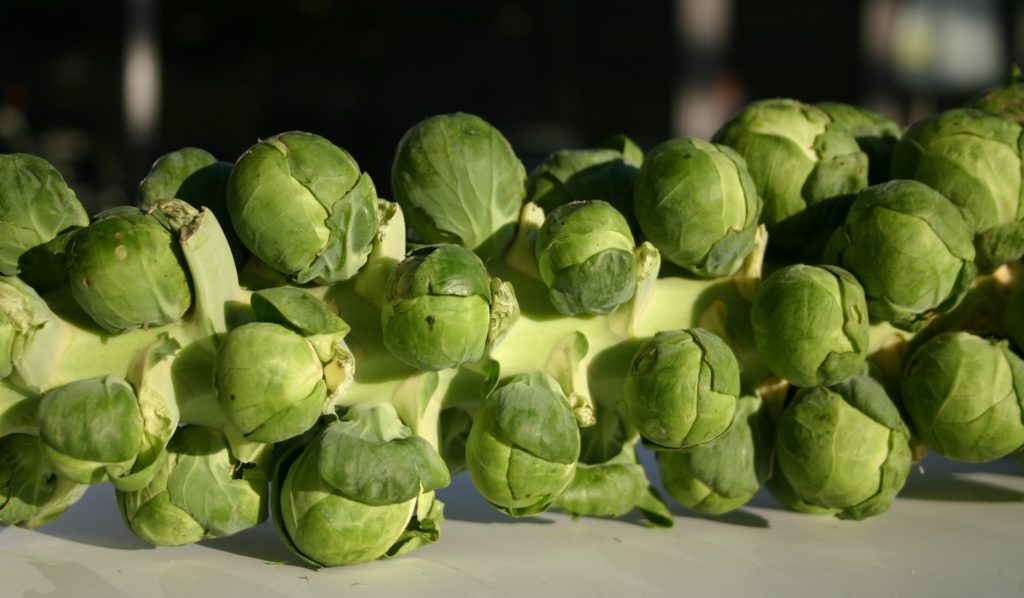Brussels Sprouts Difficulties
Good, firm, mild flavoured Brussels Sprouts are a heavy yielding crop that only need a bit of care and consideration. Here are our top tips.
Correct Growing Techniques
- F1 seeds will give the best results. It is a case of you get what you pay for. Cheap Brussels Sprouts seeds often lead to open pollinated varieties that fail to justify the time and space utilised.
- Firm almost packed soil is appreciated by Brussels Sprouts. Draw some soil up around 10″ of the stem in late summer to prevent wind rock or tie plants to a firm stake. Open loose soil encourages blown. ‘fluffy’ sprouts.
- Wet seasons can lead to foliage loss and leaf disease. Plant 12-18″ apart or wider on an open site to reduce the severity of infection. Water in summer if there is a drought.
- Where white blister and ringspot diseases are severe choose resistant varieties like Dimitri, Cronus, & Bosworth.
- This year I am trying Burbane and Rudolph from Kings seeds.

Pests and Other Problems
- Whitefly, caterpillars and aphids can be a problem mid season. It is no fun if they get into the buttons. Cold weather cures these problems but failing that I treat plants with a mild insecticide.
- Yellow fungus infected rotting leaves can’t be treated with any garden approved fungicide. Pull off any affected leaves and bin them.
- As with other brassicas their is a danger of club root that is best solved by crop rotation into fresh soil improving drainage and adding lime. I have heard of planting the sprouts with a rhubarb leaf as a prophylactic.
- Frost can be both good and bad. Young plants need to be planted mid summer well after any frost but stalks can stand into winter and are sweeter if frosted first.
- Old sprouts can have an odor caused by compounds containing sulfur. This may be the cause of sprouts falling out of favour in some kitchens until new varieties were discovered.
Varieties & Variations of Brussels Sprouts
- Top Eight F1 varieties include Brendan, Trafalgar, Crispus. Nautic, Bridget, Brodie, Maximus F1 and Hastings.
- Flower sprouts are the result of crossing a Brussels Sprout and curly Kale resulting in tasty small green and purple sprouts with curly leaves ideal for adding to stir fries.
- Older varieties of Brussels Sprouts have the best flavour, but it is the modern hybrids which have the ability to hold the small tight buttons for a long time on the stem.
- Red Brussels Sprouts deepen in colour as the weather gets colder. Red Bull produces medium sized buttons with an unusual nutty flavour. The colour reverts to green when cooking. Red Ball is hardy and has a long cropping season.
Harvesting Brussels Sprouts
- Take the buttons from the bottom of the stalk first.
- Take off blown or flowering sprouts and any yellowing leaves as you go.
- Cut off the whole stalk and use the sprouts indoors as you need them. They keep better on the stalk.
- The top of the stalk can be eaten like a small cabbage